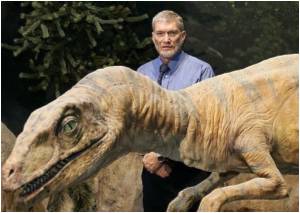To understand how amphibians crossed the continents, a researcher has created a first-of-its-kind comprehensive diagram.

The researcher succeeded in showing the movement of 3,309 species between 12 global ecoregions. The phylogeny or diagram of evolutionary relationships includes about half of all extant amphibian species from every taxonomic group. The study suggested that certain groups of amphibians might have swum long distances from one landmass to another within the past few million years.
Vicariance occurs when a population would be separated following a large-scale geophysical event. After the fragmentation of supercontinent Pangaea and the subsequent split of the Laurasian and Gondwanan landmasses, certain groups of amphibians were able to "hitch a ride" from one continent to another. The researcher's biogeographic analysis supported this hypothesis, showing that continental movement could explain the majority of patterns in the distribution of extant species of amphibians.
These findings not only provide evidence for the unlikely hypothesis of long-distance oceanic dispersal, but they also provide a model for explaining the distribution of other species and learning about the geographic diversity of different groups.
The stud is published in the journal Systematic Biology.
Source-ANI









